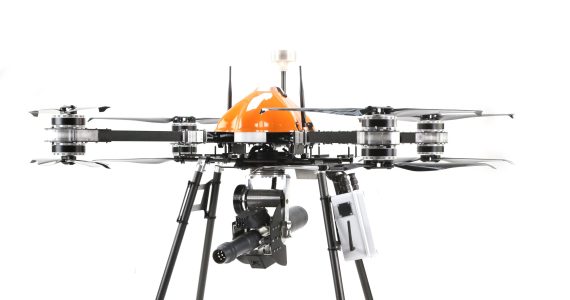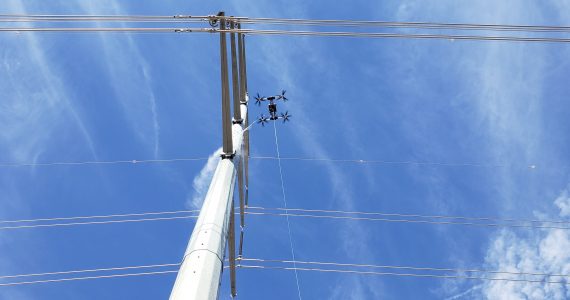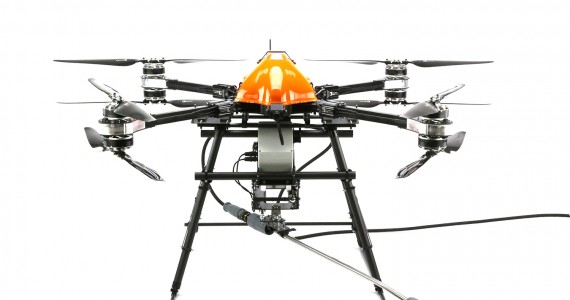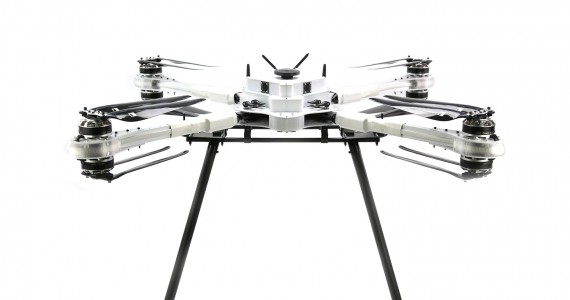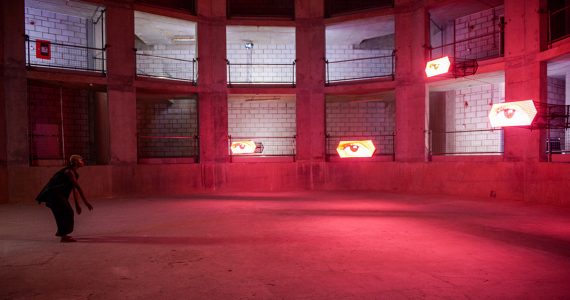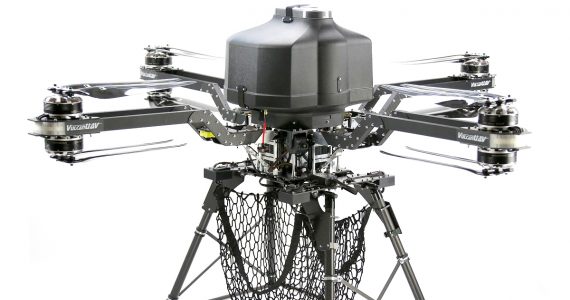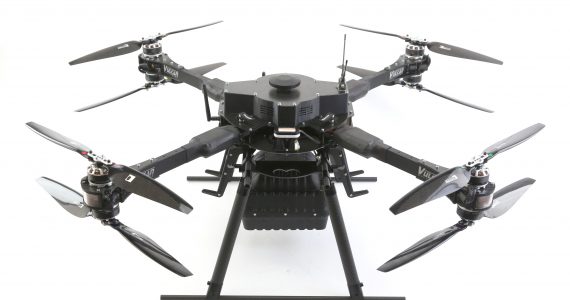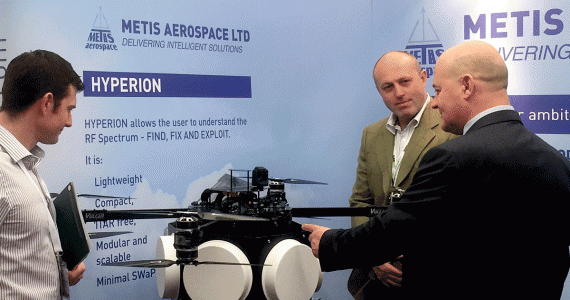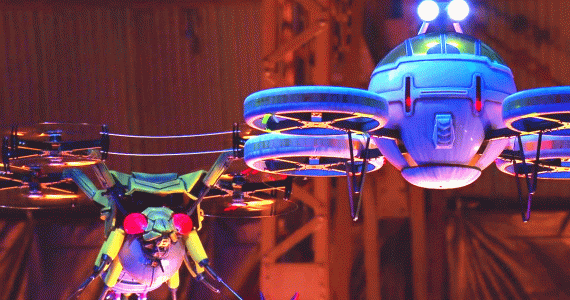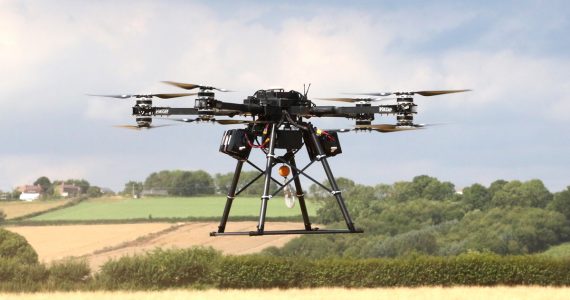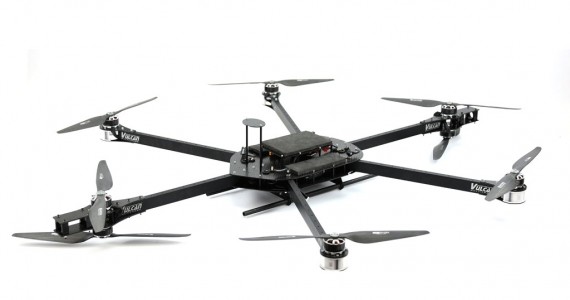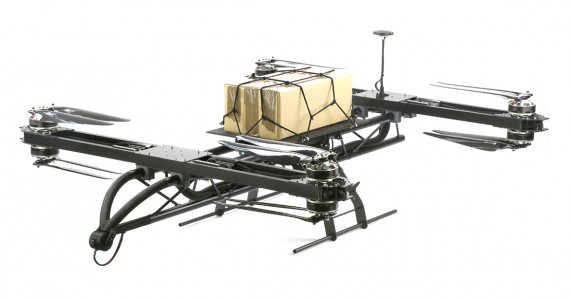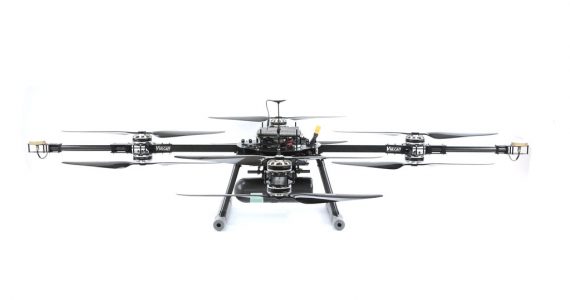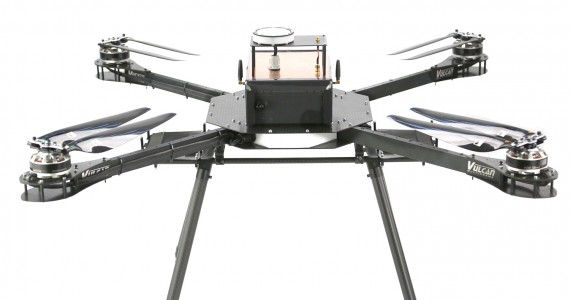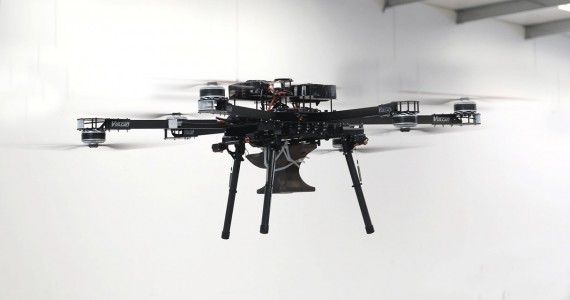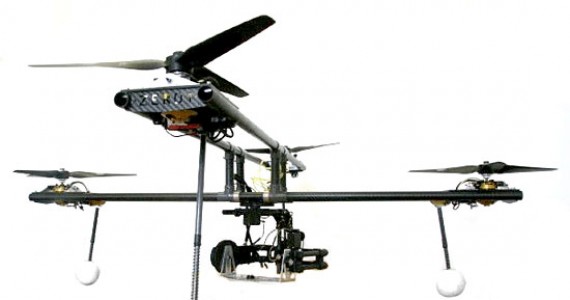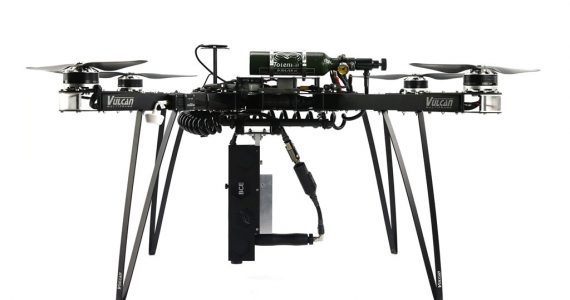With the numbers of applications and use cases for drones constantly increasing it is common that new applications needs something slightly different from what is available off the shelf. There is frequently a need to find a machine that can operate within quite specific operational parameters, in unusual ways or very particular circumstances. Currently the vast majority of our work involves some kind of system customisation. This may be something as simple as specifying a particular set of components to optimise performance, but can often involve more. Making changes to an airframe to enable the use of different sensors, fit unusual antennas, attach non-standard payloads, integrate power systems for payloads, customise landing gear, or customised functionality are commonplace. In some cases an entirely bespoke aircraft specifically designed for the particular application may be the only solution.
With our long history of building unusual VTOL flying machines, and our ability to manufacture many parts either in house or through our carefully chosen manufacturing partners, we are able to work with our customers to produce bespoke or customised systems that most closely fulfil their specific requirements. Please feel free to get in touch if you would like to discuss your project, we are happy to sign an NDA if required and you may be surprised how inexpensive a custom solution can be.
Anti Mine & IED Disruptor Drone
Based around our Harrier 7 platform, this project involved the development of a system to carry, aim and fire an anti mine and IED disruptor. The system includes a fully bespoke gimballed position control and stabilisation system for the disruptor, a sighting, zeroing and aiming system and target range finder, coupled with a highly secure communications system. The disruptor shown here is a Chemring GE70, an industrial tool normally seen on mine clearing tracked ground robots, which fires a 40mm cartridge containing 200g of wet clay at 300 m/s, with the aim of destroying the mine electronics before it can detonate. Fitting this to a drone allows excellent access to devices in almost all circumstances even those where it would be impossible or dangerous to approach on the ground, reducing clearing times and greatly reducing risk to those tasked with disarming the devices.
Firing the disruptor creates a huge shock to the system and managing this and the impact this has on both the stabilisation and aiming system, as well as the sensors used to actually fly the drone, was key to success. Although we are using the GE 70 in this case, the system could be adapted to carry almost any disruptor.
D8 High Altitude Spraying
This D8 series aircraft has been produced to enable spraying at much greater height than the original Harrier version. The D8 is a very powerful aircraft that can lift the hose full of water to over 200 feet. Spraying is undertaken using our 2nd generation robotic spray arm that now offers various control modes such as full proportional, position and hybrid position modes, and also includes automated side to side and rotational movements of the spray arm to cover specific areas with only general directional control required from the operator. A clear view of the spraying operation is provided by a high mounted FPV camera including a one axis gimbal with a cleaning pad to keep the camera free of water and maintain a clear view for the operator.
Industrial Jet Wash – Harrier 7
This waterproof Harrier 7 variant is fitted with a high power jet wash with custom built remotely operated robotic arm. Designed to operate at up to 20m above take off point (to cover tidal variation) this aircraft is used to clean the guano from access ladders on the new breed of ultra large wind turbines in the North Sea. Located over 100 miles off shore, these turbines provide the only place to land for sea birds for miles and so attract them in huge numbers. The resulting guano presents a significant health and safety risk to engineers working on the structures and has to be removed prior to access. Operating from a crew vessel in what can only be described as very harsh conditions this aircraft is highly resistant to wind, rain and spray, and with it’s high pressure cleaning payload enables safe access without risk to engineers who would otherwise have to call in a specialist crew to clean the structure.
Dendra Systems V3
Having gone commercial at the end of 2017 Dendra Systems (formerly Biocarbon Engineering) go from strength to strength with a rapidly expanding fleet of the version 3 tree planting aircraft. This version is white to help with heat management in hot climates and features a laser altimeter and RTK GPS for precision low level autonomous mission flying and precise positioning of each tree that is planted. The current system is capable of planting an incredible 600 trees in 10 minutes!
With three years of R & D behind it and fully verified success rates across a wide range of species, Dendra Systems is well on its way to its target of planting a billion trees a year!
Flying Screens
This world first from Flying Screens – a joint venture between RES Ltd. & Light Initiative Ltd – presented us with some unique challenges! Each aircraft carries a pair of ultra-bright hi resolution LED panels displaying live co-ordinated graphics whilst in flight. See four of these in action in their ‘Lucid’ video promo. Click to view: LUCID
The aircraft had to be designed to fit entirely behind and within the screens themselves causing some interesting aerodynamic effects, and well as creating the difficulty of managing the considerable weight outside the diameter of the propellers. The aircraft have to be flown accurately and in close proximity in a turbulent air environment, and so use both lasers and optical flow for position and height control. An interesting challenge. On top of this the aircraft were designed to be stacked and fitted together to make one large screen then flown off one at a time!
Airlift 2 Offshore Delivery Variant
This variant of the Airlift was designed specifically for one of our large offshore energy industry clients. It will carry a payload up to 25 Kgs and features a remote payload release system to allow the pilot to fly from support ship to the heli pad on an oil rig, release the payload and leave without anyone needing to approach the aircraft.
This aircraft is fully weather resistant, has a custom one axis FPV camera gimbal and range sensor for remote landing assistance and can be folded for transportation.
GPR (Ground Penetrating Radar)
As the name implies GPR is used to look for information about what is beneath the ground with applications ranging from archeology to mine detection. Normally GPR would be fitted to a small ground vehicle or even dragged across the ground by a human operator, however this approach is not always practical or in some cases even possible. GPR sensors rely on close proximity to the ground, so to undertake this from a UAV requires operation at very low level and at a very consistent altitude. A grid pattern using waypoints is generated and altitude is maintained using a very accurate laser altimeter and some clever terrain following algorithms.
Flying at this level means the aircraft must have very accurate control and also be highly resilient to wind as any deviation could easily result in a crash. This particular aircraft is extremely stable, produces minimal vibration, and can manage around a 30 minute flight with the GPR allowing for good coverage between battery changes. Altitude control is accurate to around 1 cm.
RF Spectrum Monitoring
This Raven variant was designed to carry an extremely sensitive RF spectrum monitoring system. Traditionally such systems are bulky and heavy but Metis Aerospace developed a system light enough to be flown by one of our aircraft. With a payload as sensitive and high value as this, low vibration levels, excellent resilience in difficult conditions, ultimate reliability, quick deployment and ease of use are all key.
The system itself is designed to pop up anywhere at very short notice and monitor activity across the full range of RF frequencies. We cannot disclose exactly how wide a range or number of frequencies it can monitor simultaneously, but it is a very impressive piece of kit!
Airmageddon
Airmageddon is a ‘Robot Wars’ type TV show made by the BBC in conjunction with DHX Media in Canada. It features 9 – 14 year old pilots flying drones in a tasks from obstacle courses, to knocking down brick walls with wrecking balls, lifting objects with electro magnets, hitting targets with paint ball guns and more. The show aired for the first time on CBBC at the end of January 2016.
An interesting project as we had to produce six ‘house drones’ (WASP & GUARD featured in this picture), as well as a fleet of bespoke X8s for the competitors to fly. These had to be very tough but also easy to repair as crashes were, to say the least, common!
Vulcan UAV Smart Winch
The Vulcan UAV smart winch was developed by us for delivery of light payloads to areas where landing is not possible (such as the top of wind turbines), or for the placing of equipment or sensors in hard to reach or no access locations (with the addition of our remotely operated dropping hook – not shown here). The smart winch is integrated into one of our removable quick release landing gear systems for quick swapping of different payloads for different functions.
The winch is almost entirely automated as it must be able to operate well away from clear view of the pilot operator. A downward facing camera is fitted, and the winch is able to monitor its position at all times enabling the operator to have no concerns about deployment height or correct retraction. A simple three position switch is all that is needed to operate all winch functions. A number of safety systems are included such as overload protection, signal loss, positional override reset and even an emergency escape procedure in case the winch line were to get tangled or hooked to something on the ground.
Hex 8
Unfortunately we cannot discuss the payload or application for this particular aircraft, or the reasons behind why it was developed. However the Hex 8 is a truly unique aircraft configuration with the redundancy offered by 8 motors and with the improved efficiency of having only two pairs of co axial motors. The machine also maintains the benefits gained by co axial aircraft in handling difficult weather conditions. The Hex 8 folds neatly into a compact form for transportation.
Vulcan D7 & D8 Delivery Drone
The D7 and D8 are designed for simple delivery applications. The item to be delivered is placed on top of the aircraft to avoid the difficulties of getting packages into and out from the underside of the aircraft. The anti-slip matt and tough elasticated cargo net prevent the item moving during flight, and make for simple and quick removal on arrival. The D7 is capable of a payload up to 10 Kgs, and the D8 option increases this to 20 Kgs.
| Flight Times D7: |
| No payload: >40 mins |
| 10 Kgs: >20 mins |
| Flight Time D8: |
| No payload: >40 mins |
| 20 Kg: > 15 mins |
LDH8 with RouteScene LidarPod
This X8 prototype flew the first RouteScene LidarPod prototype at the end of 2013, with incredible results. Things have moved on since then and the latest version of the LDH8 is now in regular use with clients all over the world, achieving flight times of up to 30 minutes with payload, in real world conditions.
The RouteScene LidarPod stands as the bench mark for light weight aerial Lidar systems offering accuracy well beyond the competition in this weight range.
Offshore Auto Landing System
This aircraft was built for testing an autonomous landing system for use offshore. Taking off and landing on a moving deck in the North Sea is no easy task even for the most experienced of pilots. To do this autonomously is complex to say the least, but this is something required as part of an Innovate UK project in which we are involved. Details of the control system are currently not public, but due to the tough conditions of operation the key feature of this aircraft is that it (and it’s externally mounted batteries) are built to withstand full immersion in sea water.
AirLift 1
This is the V1 prototype of the AirLift series developed for a particular customer. This particular machine is a folding Hex design with alternated propellers to reduce the form factor.
Here it is seen flying a 13 Kg dummy payload (a steel anvil) for around 25 minutes during an indoor hover test.
The production version of this machine is due for release soon, and will be a traditional co axial X8, with a unique folding mechanism and the ability to lift payloads up to 30 Kgs , or carry lighter loads for very long duration flying. This will offer the potential to fulfil a range of applications including maritime SAR.
Zero1TV
This Quad is an ongoing project that utilises thrust vectoring on all four motors for directional and yaw control, with the idea that the airframe can manoeuvre and / or hold its position across the ground by altering the angle of thrust of each motor individually, allowing the airframe to remain level at all times. This means there is no need for the aircraft to change the angle of the frame itself when making transitional moves and the payload can be kept very nearly level at all times without the need for additional stabilisation.
Dendra Systems Quad
This Quad aircraft was built for UK company Dendra Systems (formerly Bio Carbon Engineering) to test a very interesting application. The concept was to vastly improve reforestation rates by firing pre-germinated seeds in biodegradable nutrition pods directly into the ground from the air. The aim is to plant 1 billion trees per year, replacing the slow and difficult manual planting methods currently in use.
The Quad is fitted with an air powered seed gun powerful enough to penetrate ground vegetation and surface soil, getting the seed directly into the ground…..and it works very well! This is a version 1 prototype has been scaled to achieve their targets. Flight time for this particular machine is around 40 mins.
You can find out more here at www.dendra.io
